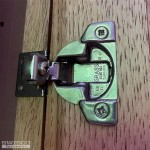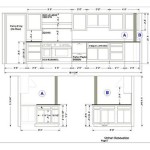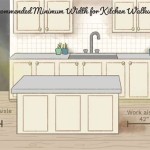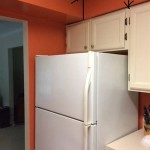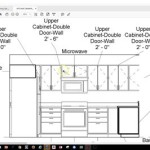How to Determine the Type of Kitchen Cabinets Required to Match Existing Styles
Maintaining aesthetic consistency in a kitchen, particularly when renovating or replacing only a portion of the cabinetry, requires a careful assessment of the existing cabinet style. Successfully matching new cabinets to existing ones involves understanding various characteristics, including construction methods, door styles, materials, finishes, and hardware. Without a comprehensive evaluation, the newly installed cabinets may appear disjointed or out of place, detracting from the overall design. This article provides a detailed guide on identifying the features of your current kitchen cabinets to facilitate a seamless integration with any additions or replacements.
Assessing Cabinet Construction and Framing
The first step in determining the type of kitchen cabinets necessary to match existing ones is to evaluate their construction and framing. Two primary construction types are frameless (also known as European-style) and framed cabinets. Identifying which type is present in the existing kitchen is crucial for maintaining visual harmony.
Framed cabinets are characterized by a face frame, typically 1 ½ to 2 inches wide, attached to the front of the cabinet box. This frame provides structural support and a surface to which the doors and drawers are attached. The frame can be either full overlay, partial overlay, or inset. A full overlay frame indicates that the doors and drawer fronts completely cover the frame, leaving minimal gaps. Partial overlay cabinets have doors and drawer fronts that partially cover the frame, leaving a visible portion of the frame around each door and drawer. Inset cabinets feature doors and drawer fronts that fit flush within the frame, creating a smooth, aligned surface.
Frameless cabinets, in contrast, lack a face frame. The doors and drawer fronts attach directly to the cabinet box, resulting in a sleek, modern appearance. This construction method typically allows for more accessible storage space inside the cabinets, as there is no frame obstructing access. The edges of the cabinet boxes are usually finished with a matching edge banding to provide a clean and refined look.
To determine the existing cabinet construction type, examine the front of the cabinets. If a frame is visible around the doors and drawers, the cabinets are framed. If the doors and drawers attach directly to the cabinet box with no visible frame, the cabinets are frameless. Furthermore, note the type of overlay (full, partial, or inset) if the cabinets are framed. Understanding the details of the existing cabinet construction is fundamental for selecting compatible replacement or additional cabinets.
Beyond the presence or absence of a frame, consider the materials used in the cabinet box construction. Common materials include plywood, particleboard, and medium-density fiberboard (MDF). Plywood is known for its strength and resistance to moisture, while particleboard is a more economical option. MDF provides a smooth surface that is ideal for painting or applying veneers. Match the cabinet box material as closely as possible to ensure consistent performance and lifespan across all cabinets.
Analyzing Cabinet Door Styles and Profiles
Another critical aspect of matching kitchen cabinets is the door style. Cabinet doors significantly contribute to the overall aesthetic of the kitchen, and selecting the correct style is essential for a cohesive design. Numerous door styles are available, each with distinct characteristics that influence the kitchen's appearance.
Shaker doors are one of the most popular and versatile styles. They feature a five-piece construction with a flat center panel and a simple, square-edged frame. Shaker doors are known for their clean lines and timeless appeal, making them suitable for a wide range of kitchen designs from traditional to contemporary.
Raised panel doors, in contrast, have a center panel that is raised above the surrounding frame. This style is often associated with more traditional and ornate kitchens. The raised panel can have various profiles, such as a cathedral arch or a scooped edge, adding to the decorative detail.
Flat panel doors, also known as slab doors, feature a single, flat panel with no frame. These doors provide a minimalist and modern look. They are typically made from MDF or plywood and can be finished with paint, veneer, or laminate.
Glass-front doors incorporate glass panels, allowing visibility into the cabinet interior. They can be used to display decorative items or to break up a wall of solid doors. Glass-front doors are available in various styles, including clear glass, frosted glass, and textured glass.
To identify the existing cabinet door style, carefully examine the door's construction and profile. Note the shape of the center panel (flat, raised, or glass) and the style of the frame. Consider whether the door has any decorative details, such as grooves, moldings, or carvings. Capture close-up images of the doors to ensure accurate matching.
Furthermore, assess the edge profile of the doors and drawer fronts. The edge profile refers to the shape of the door's edges, and it can significantly impact the overall look. Common edge profiles include square edges, beveled edges, rounded edges, and ogee edges. Match the edge profile as closely as possible to maintain visual consistency.
Matching Materials, Finishes, and Hardware
Beyond construction and door styles, matching the materials, finishes, and hardware is essential for seamless integration. Inconsistencies in these elements can create a disjointed or mismatched appearance, even if the cabinet construction and door styles are similar.
The material the cabinet doors and frames are made from significantly impact the overall look and feel of the kitchen. Common materials include solid wood, wood veneer, laminate, and thermofoil. Solid wood cabinets offer durability and a natural aesthetic, while wood veneer provides the look of solid wood at a lower cost. Laminate cabinets are resistant to scratches and stains, making them a practical choice for high-use areas. Thermofoil cabinets feature a vinyl layer that is heat-bonded to an MDF core, offering a smooth and easy-to-clean surface.
Determine the existing cabinet material by examining the surface and edges of the doors and frames. Solid wood will have a visible wood grain pattern, while wood veneer will have a thin layer of wood over a substrate. Laminate and thermofoil cabinets will have a smooth, uniform surface with no visible wood grain. Consider taking a door or drawer front to a cabinet supplier to aid in material identification.
The finish on the cabinets also plays a crucial role in the kitchen's overall aesthetic. Common finishes include paint, stain, and clear coat. Painted cabinets offer a wide range of color options and can be easily updated over time. Stained cabinets highlight the natural beauty of the wood grain, providing a warm and inviting look. Clear coat finishes protect the wood surface without altering its natural color.
Matching the existing cabinet finish requires careful attention to detail. If the cabinets are painted, obtain a paint sample to match the color and sheen. Paint sheen refers to the amount of light that is reflected from the surface, and it can significantly impact the appearance of the cabinets. Common sheen levels include matte, eggshell, satin, semi-gloss, and high-gloss.
If the cabinets are stained, identify the stain color and the type of topcoat. Stain colors can be matched using stain charts or by taking a sample to a paint store. The topcoat protects the stain and provides a durable surface. Common topcoats include lacquer, varnish, and polyurethane.
Cabinet hardware, including knobs, pulls, and hinges, is another important element to consider. Matching the hardware style, finish, and size will contribute to a cohesive look. Common hardware finishes include chrome, brushed nickel, oil-rubbed bronze, and black. Measure the existing hardware to ensure that the replacements are the correct size and spacing.
Hinges are a critical, yet often overlooked, element. Identifying whether the existing hinges are visible or hidden is vital. Hidden hinges, commonly found in frameless cabinets, offer a cleaner look. If visible, note the style and finish of the existing hinges to ensure a match. Soft-close hinges are a modern upgrade that can be incorporated into new cabinets while still complementing older counterparts.
Carefully documenting all of these elements – the construction type, the door style, the materials, the finish, and the hardware – will provide a solid foundation for selecting new cabinets that seamlessly integrate with the existing kitchen design. Always seek guidance from experienced cabinet makers or designers to confirm your assessment and ensure a successful outcome.

Mix Match Cabinets A How To Guide The Cabinet Doctors

The Case For Matching Hinges To Cabinet Color Bean In Love

Do All My Kitchen Cabinets Need To Match

Mixing And Matching Cabinet Styles For Your New Kitchen Parr Design Center

13 Types Of Kitchen Cabinets Must Know Guide

About Two Tone Kitchen Cabinets Wolf Home S

Kitchen Cabinet Parts Terminology Granite Quartz Countertops Cabinets Factory

Kitchen Confidential 7 Ways To Mix And Match Cabinet Colors

How To Match Your Kitchen Cabinets Countertops And Floor We Organize U

Can I Match My Existing Cabinets Dreammaker Bath Kitchen Blog
Related Posts

